Team Kobayashi, consisting of Architectural Design and other students of Tokyo Tech High School of Science and Technology, have won the Presentation Award at Passionate & Advanced Mission-E: Space Architecture Project, an engineering contest held on March 24 and sponsored by Nippon Steel Engineering Co., Ltd. They also finished second overall in the contest.
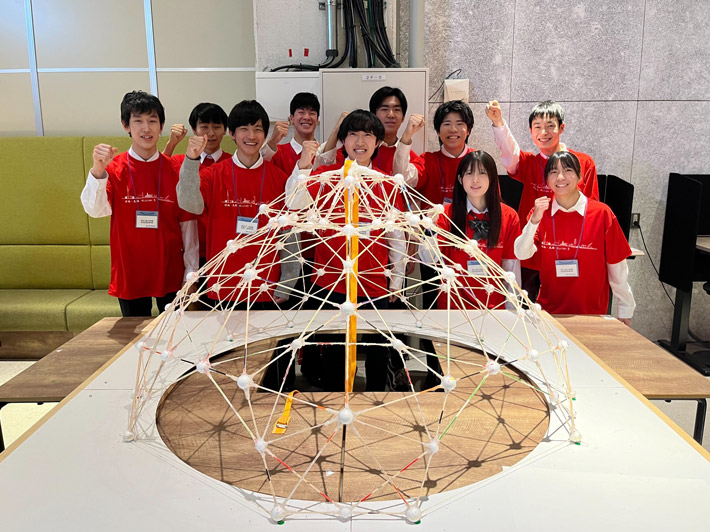
Victorious Team Kobayashi with their structural model
Passionate & Advanced Mission-E
Passionate & Advanced Mission-E is a science, technology, engineering, art, and mathematics-focused next-generation development project sponsored by Nippon Steel Engineering Co., Ltd. The program provides middle and high school students with the experience of solving problems independently using engineering methods while learning the required knowledge and approaches to take on challenges from engineers currently active in the field.
Designing 2030 Winter Olympics stadium
As was the case in academic year 2021, when a Tokyo Tech high school team won the entire contest, the theme of this year's Space Architecture Project was the creation of the Winter Olympics stadium for 2030. A total of five school teams joined the contest with the goal of designing the main 2030 Olympic venue, which would have to house, among other components, a double ice-skating track. The teams were also asked to produce a 1/100 scale structural model of their creation and give a final presentation on their work.
Team Kobayashi experienced various difficulties after the contest began with the opening ceremony in July 2023. However, with the help of Nippon Steel Engineering mentors and Tokyo Tech High School of Science and Technology alumni who won the contest in two years ago, the team overcame these challenges and successfully completed the demanding project over an eight-month period.
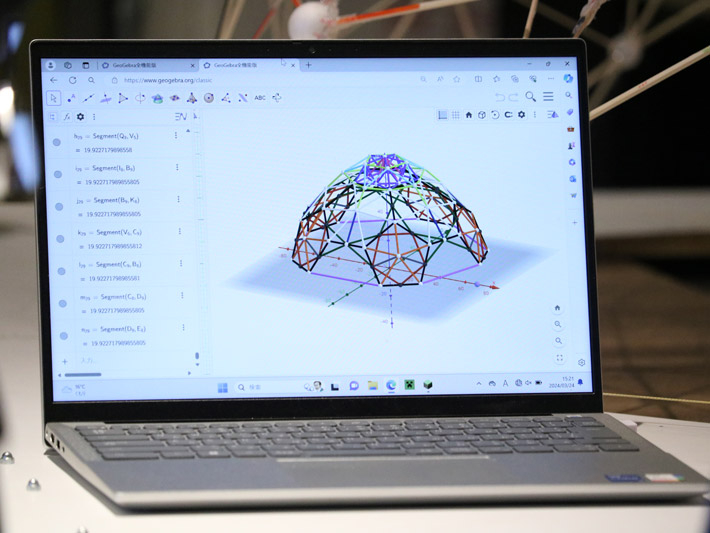
Team Kobayashi utilizing 3D design software
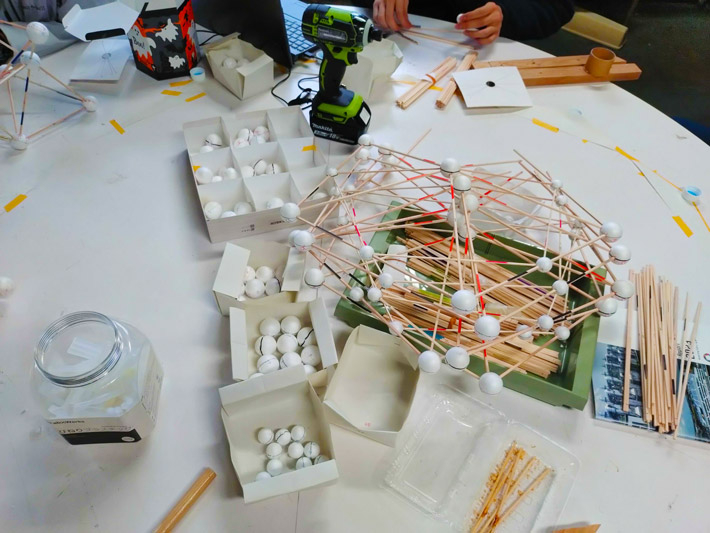
Team building smaller units to enhance model efficiency
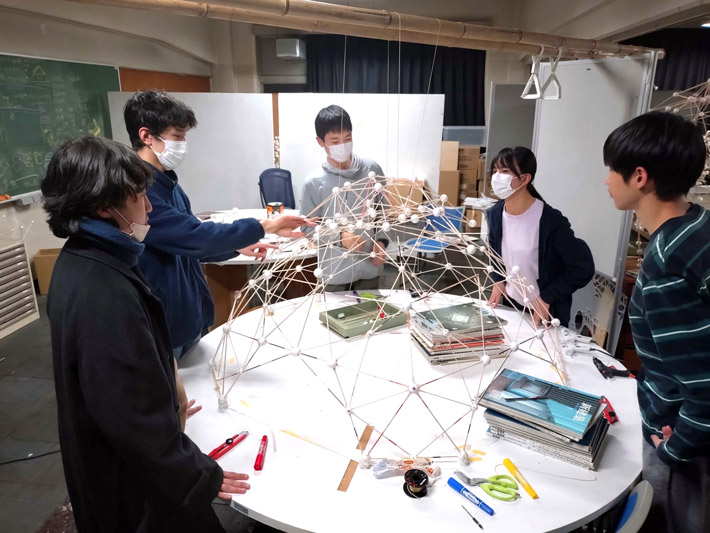
Team members working on their creation at school
During the final presentations, the participating teams explained the features of their "Teine Star Cap Arena," the Olympic stadium they had envisioned, their approach to the building of the structural model, any building and environmental considerations required during actual construction, and their plans for the use of the facility after the Olympics. They also put their structural models through a load test.
Team Kobayashi finished first in the load test with a result of 30 kgf and demonstrated the best cost performance, which was measured in terms of load capacity in relation to materials costs. In overall points, which were tallied according to presentation, load capacity, and cost performance, Team Kobayashi finished second.
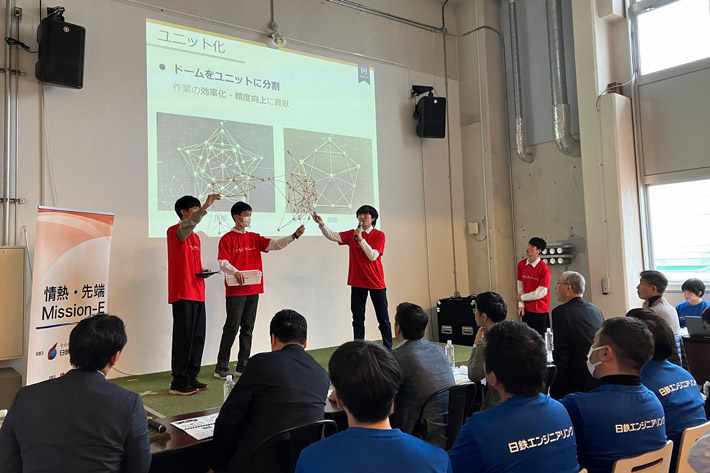
Team Kobayashi members presenting
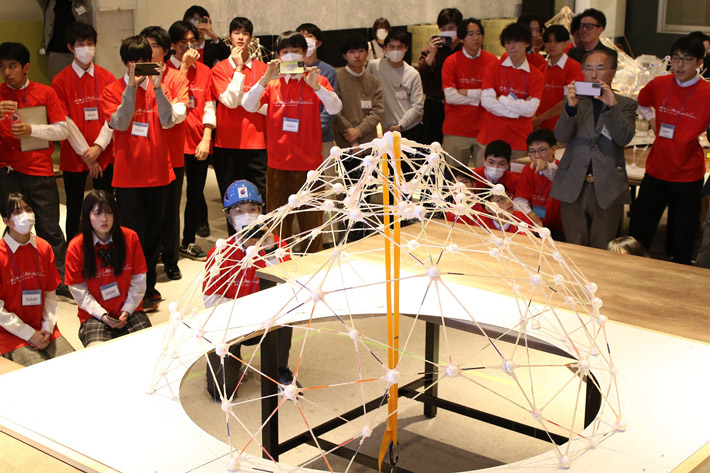
Structural model load test
On the final day, members of Team Takebayashi, the Tokyo Tech High School of Science and Technology Team who won the contest in academic year 2021, also joined the event. In addition to interacting with engineers and judges, they gave a presentation on their efforts during the previous contest and their activities after graduation from the high school.
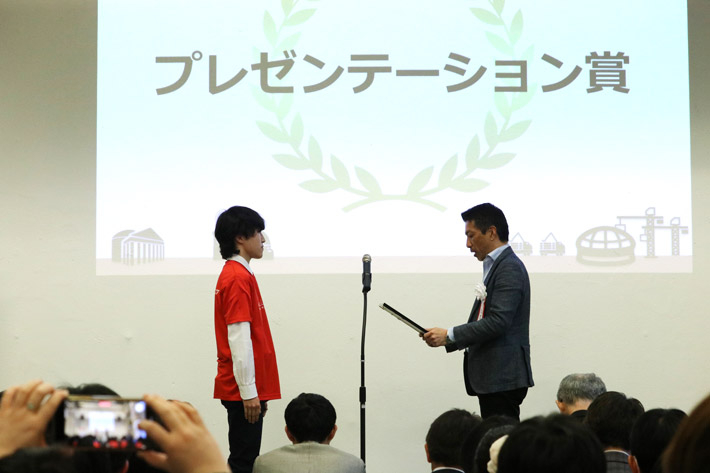
Team rep receiving Presentation Award
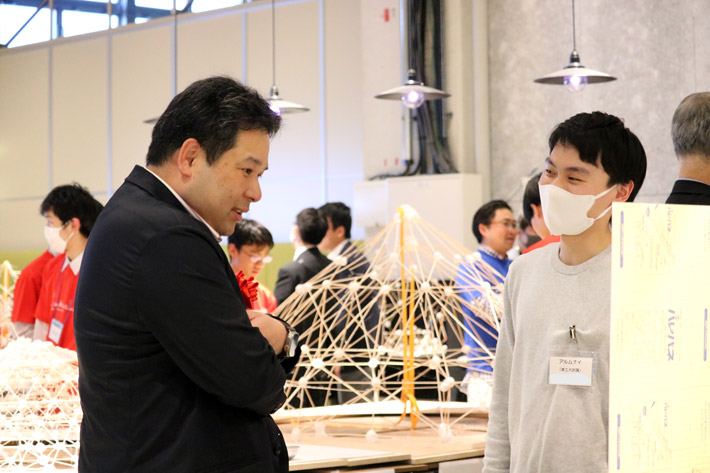
Tokyo Tech high school graduate (right) speaking with contest judge
Tokyo Tech High School of Science and Technology, the only national high school of science and technology in Japan, promotes cooperative learning with Tokyo Tech and focuses on early education in specialized fields of science and engineering.
Members of Team Kobayashi
- Yuki Kobayashi, 2nd year, Architectural Design
- Kanatoki Sunada, 2nd year, Architectural Design
- Hoku Takebe, 2nd year, Architectural Design
- Osuke Shimura, 2nd year, Architectural Design
- Sosei Noguchi, 2nd year, Architectural Design
- Shogo Watanabe, 1st year, Department of Science and Technology
- Kanon Nakatani, 1st year, Department of Science and Technology
- Ayako Iino, 1st year, Department of Science and Technology
- Yusuke Shirota, 1st year, Department of Science and Technology
- Yuto Kurita, 1st year, Department of Science and Technology
- Sukai Nakagawa, 1st year, Department of Science and Technology
All affiliations in this article were accurate at the time of the event.
Supporting high school teachers
- Kensuke Kobayashi, Architecture and Design
- Kaori Mogami, Architecture and Design
Comments from team leader
Yuki Kobayashi
2nd year, Architectural Design
This eight-month project was a great learning experience. I had many opportunities to interact with actual businesspeople working for companies, which inspired me to think more about the future. The project was also a valuable opportunity to consider extensively the multifaceted elements involved in solving problems, such as time management and strengthened cooperation within the team. It is unfortunate that we missed out on overall victory by a narrow margin. Still, I think we made full use of the knowledge we have gained in the field of architectural design, as well as the laser processing and other strengths of Tokyo Tech High School of Science and Technology. We gave it our all.






